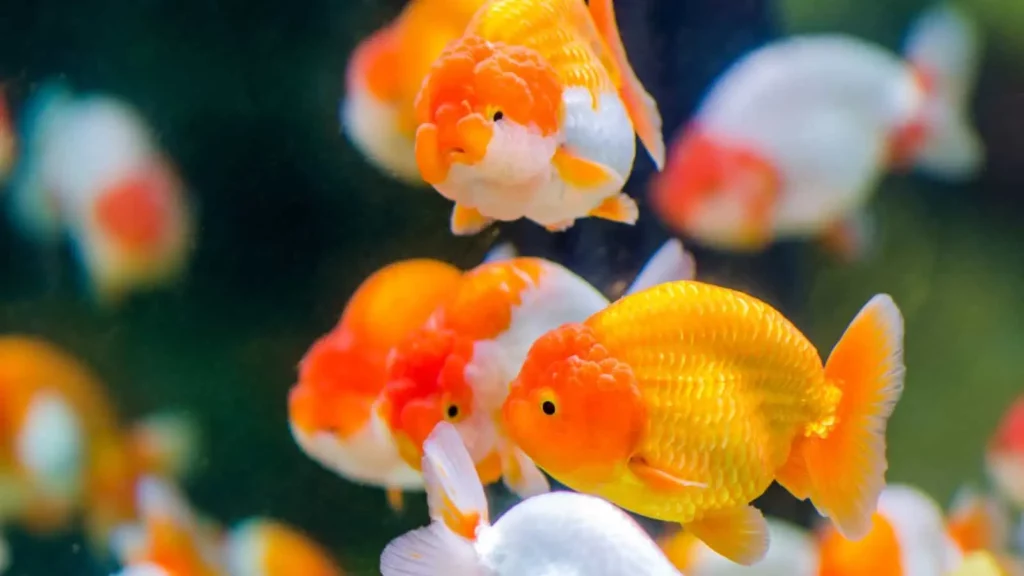Goldfish have long held a cherished place in the hearts of freshwater aquarium enthusiasts. In this comprehensive guide, we embark on a journey to uncover the intricacies of goldfish social behavior, exploring recommended group sizes for different goldfish breeds, and addressing the consequences of overcrowding, join us as we navigate the path to maintaining a thriving and harmonious goldfish community.

Goldfish are beloved freshwater pets known for their vibrant colors and graceful swimming. If you’re considering keeping goldfish, one important question to address is how many should be kept together. In this article, we’ll explore the social nature of goldfish and factors to consider when determining the appropriate group size.
We’ll also discuss the recommended group sizes for different types of goldfish, the consequences of overcrowding, and provide some useful tips for maintaining a healthy goldfish community.
Goldfish are social animals and thrive when kept in the company of others. In their natural habitat, goldfish swim in large shoals, constantly interacting with fellow goldfish.
When kept alone, they may exhibit signs of depression and lethargy, as they lack the companionship they need. By keeping goldfish in groups, you can provide them with the social stimulation and activity they crave.
Optimal Goldfish Tank Population: Balancing Fish Health and Tank Size
Optimal goldfish tank population revolves around striking a delicate balance between fish health and tank size. Goldfish, being cold water fish, necessitate specific care requirements to thrive. The primary concern in managing a goldfish tank population is fish waste accumulation, which can escalate with too many fish in a confined space.
Overcrowding not only compromises water quality but also stresses the goldfish, leading to compromised immune systems and increased susceptibility to diseases.

Maintaining one goldfish or first fish per every 20 gallons of water is a widely recommended guideline to ensure adequate space and minimize waste buildup.
Introducing other fish into the tank requires careful consideration of compatibility and space requirements, as overcrowding can swiftly lead to deteriorating water conditions and compromised goldfish health.
Ultimately, prioritizing the well-being of adult fish entails mindful population management, guaranteeing an environment conducive to keeping goldfish healthy and thriving.
Factors to Consider When Determining Group Size
When deciding how many goldfish to keep together, there are several factors to consider:
Tank Size and Space Requirements
One of the most important considerations is the size of the tank. Goldfish require ample space to swim and thrive. As a general rule of thumb, allocate at least 20 gallons of water for the first goldfish and an additional 10 gallons for each additional goldfish. This will ensure that they have enough room to swim freely and have adequate oxygen levels.
Compatibility of Goldfish Breeds
Another crucial aspect to consider is the compatibility of different goldfish breeds. Some breeds are more territorial and aggressive, while others are more peaceful. It’s important to choose goldfish breeds that are compatible in terms of temperament to minimize potential conflicts within the group.
Size and Age Differences

When introducing goldfish to a group, it’s essential to consider their size and age differences. Adding goldfish of similar sizes and ages will help prevent any dominance issues and ensure a harmonious group dynamic. If there’s a considerable size difference, larger goldfish might bully or outcompete smaller ones for food and resources.
Recommended Goldfish Group Sizes
The optimal group size for goldfish can vary depending on the specific breed. Here are some general guidelines:
Guidelines for Common Goldfish
For common goldfish, such as the Comet or Shubunkin, a group of three to five individuals is recommended. These goldfish breeds are active swimmers and require sufficient space to exhibit natural behavior.
Guidelines for Fancy Goldfish
Fancy goldfish, like the Fantail or Oranda, have more delicate features and slower swimming speeds. For these breeds, a smaller group size of one to three individuals is advised to prevent overcrowding and ensure proper care and attention to each fish.
Consequences of Overcrowding
Overcrowding a goldfish tank can have negative consequences for their health and overall well-being. Here’s what can happen:
Health Issues
When goldfish are overcrowded, stress levels increase, leading to a weakened immune system and a higher risk of disease. Additionally, poor water quality due to excess waste production can further compromise their health.

Increased Waste Levels
In an overcrowded tank, the waste produced by goldfish, including ammonia and nitrate, can accumulate faster than the filtration system can handle. This can result in poor water quality, leading to health problems for the fish.
Tips for Maintaining a Healthy Goldfish Community
To ensure the well-being of your goldfish community, follow these helpful tips:
Regular Monitoring and Maintenance
Regularly test the water parameters, including temperature, pH levels, and ammonia levels, to ensure they are within the appropriate range. Perform routine water changes and clean the tank as needed to maintain proper water quality.
Providing Adequate Filtration
Invest in a high-quality filtration system that can handle the waste produced by the goldfish. A good filter will help maintain a clean and healthy environment for all the fish in the tank.
Ensuring Proper Nutrition
Provide a balanced diet for your goldfish, consisting of high-quality pellets or flakes specially formulated for their nutritional needs. Avoid overfeeding, as excess food can contribute to water pollution.

What size tank do you want to Ensure Long-Term Health
Choosing the right tank size is paramount for maintaining the long-term health and vitality of your goldfish population. While it may be tempting to opt for a small tank initially, it’s essential to consider the space requirements for these aquatic pets. Goldfish can grow considerably large, depending on their body shapes and breeds, thus necessitating ample swimming room to thrive.
Housing multiple goldfish in a small tank can lead to overcrowding, increased waste levels, and stress, potentially compromising their health. Additionally, introducing other goldfish or companions to the tank must be done with caution, ensuring compatibility and adequate space for each inhabitant.
Proper filtration and water quality management, such as using dechlorinated tap water, are crucial for maintaining a healthy aquatic environment. Outdoor ponds can provide a more suitable habitat for goldfish, allowing for natural growth and ample space to explore. Remember, even if starting with just one fish, consider the potential size and needs of your goldfish population for optimal long-term care.

Conclusion
When it comes to keeping goldfish, providing them with companionship is crucial for their overall well-being. By considering factors such as tank size, breed compatibility, and size and age differences, you can determine the appropriate group size for your goldfish.
Avoid overcrowding to prevent health issues and maintain a thriving goldfish community. Remember to regularly monitor and maintain your tank’s water quality, provide adequate filtration, and ensure proper nutrition for healthy and happy goldfish.
